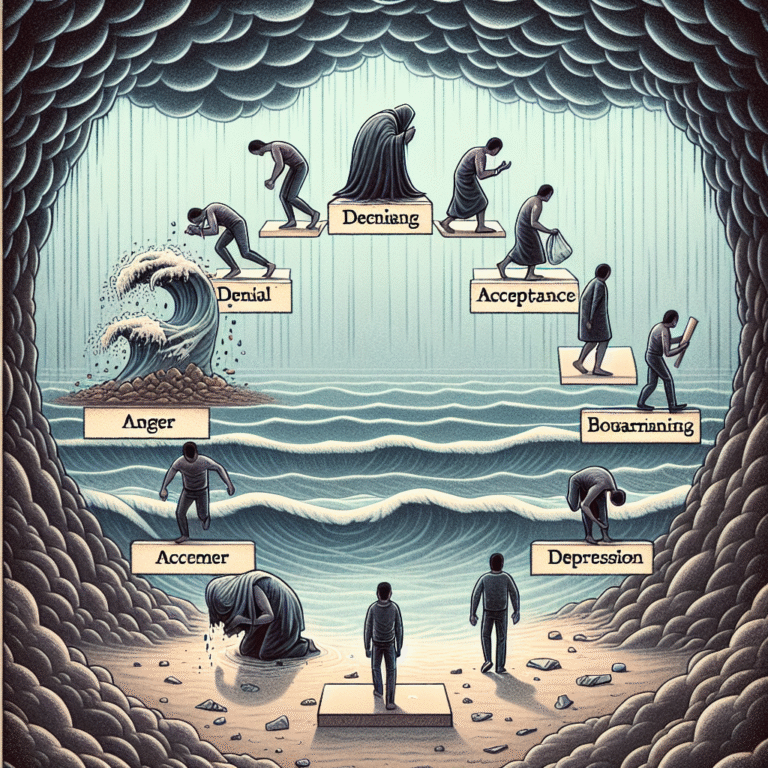
Are You Overlooking These Early Symptoms of Anxiety Disorders? Essential Insights to Recognize Early Warning Signs
Introduction
Anxiety disorders are among the most common mental health issues affecting millions of individuals worldwide. Despite their prevalence, many people remain unaware of the subtle signs that signal the onset of these disorders. Are you overlooking these early symptoms of anxiety disorders? In this comprehensive guide, we will explore the critical early warning signs, share real-life case studies, and empower you with actionable insight to recognize anxiety in yourself or a loved one.
Anxiety, while often dismissed as mere stress or worry, can manifest in complex ways that go unnoticed. The societal stigma surrounding mental health can further inhibit individuals from acknowledging their symptoms, ultimately delaying crucial interventions. By the end of this article, you will possess the essential knowledge to identify these subtle symptoms and take proactive steps toward well-being.
What Are Anxiety Disorders?
Anxiety disorders encompass a range of conditions, including generalized anxiety disorder (GAD), social anxiety disorder, panic disorder, and specific phobias. These disorders can disrupt daily life, affect physical health, and strain relationships.
Common Types of Anxiety Disorders
| Disorder Name | Description |
|---|---|
| Generalized Anxiety Disorder | Chronic worry about various aspects of life. |
| Social Anxiety Disorder | Intense fear of social situations and interactions. |
| Panic Disorder | Recurrent, unexpected panic attacks. |
| Specific Phobias | Intense fear of specific objects or situations. |
These conditions can be debilitating, but recognizing early symptoms is pivotal in addressing them effectively.
Are You Overlooking These Early Symptoms of Anxiety Disorders?
Now, let’s delve into the early symptoms that individuals often overlook.
1. Restlessness and Agitation
The sensation of being on edge or restless is often minimized as mere tension or fatigue. However, if you find yourself unable to relax, consistently fidgeting, or feeling unusually agitated, don’t dismiss these feelings.
Case Study: Sarah’s Struggle with Restlessness
Sarah, a 30-year-old marketing professional, experienced increased restlessness during her work project. While she attributed it to deadlines, the feelings intensified, leading to irritability. Recognizing this pattern allowed her to seek help. An early intervention helped her manage her anxiety, improving her productivity and general mood.
2. Physical Symptoms
Physical manifestations of anxiety can include headaches, gastrointestinal issues, and muscle tension. Many people overlook these symptoms, associating them with typical stress rather than as indicators of anxiety.
Case Study: James’ Physical Signs
James, a college student, experienced debilitating headaches and stomach pain during exam periods. Initially considering them part of the academic pressure, seeking medical advice revealed underlying anxiety. By addressing the root cause, he improved his physical health and academic performance.
3. Sleep Disturbances
Difficulty sleeping or experiencing restless nights can be an early sign of anxiety disorders. Many individuals blame lifestyle factors like late-night work, overlooking the possibility that anxiety could be the underlying cause.
Case Study: Emily’s Sleep Struggles
Emily, a young professional in a high-pressure job, faced recurring nightmares and sleepless nights. After discussing her symptoms with a therapist, she recognized anxiety as the cause. Adopting healthier sleep habits and cognitive-behavioral techniques led her to restful nights and a more balanced life.
4. Social Withdrawal
Do you notice yourself withdrawing from social activities or feeling overwhelmed in group settings? This symptom often sneaks in unnoticed as social fatigue, but it can be a clear indicator of anxiety.
Case Study: Mark’s Isolation
Mark, who loved going out with friends, gradually began declining invitations until he isolated himself. Initially brushed off as an introverted phase, it was discovered that underlying anxiety was pushing him away from his social circles. With therapy, he learned coping techniques that helped him re-engage with his friends.
5. Constant Worrying
Excessive worry or a sense of impending doom can signal anxiety. If you find yourself mulling over potential "what ifs" frequently, take note.
Case Study: Jennifer’s Coping Mechanism
Jennifer constantly worried about her job security to the point of insomnia and irritability. What began as job-related anxiety spiraled into a full-blown disorder. By identifying her worrying patterns with the help of a coach, she learned coping mechanisms that transformed her mindset, allowing her to approach her job with renewed confidence.
Table: The Overlooked Symptoms of Anxiety Disorders
| Symptom | Description | Action |
|---|---|---|
| Restlessness | Constant inability to relax or sit still. | Mindfulness exercises or physical activity can help. |
| Physical Symptoms | Headaches, muscle tension, fatigue. | Consult a healthcare provider for a comprehensive check-up. |
| Sleep Disturbances | Trouble sleeping, insomnia, nightmares. | Establish a calming bedtime routine; consider sleep aids if needed. |
| Social Withdrawal | Avoiding social activities or events. | Gradually reintroduce social body; seek support from friends. |
| Constant Worrying | Persistent unease, focusing on negatives. | Cognitive-behavioral strategies can reshape your thought patterns. |
Recognizing and Addressing Early Symptoms
Talk to Someone
Don’t underestimate the value of talking. Share your feelings with someone you trust. Sometimes, discussing your emotions can lead to profound insights.
Keep a Journal
Tracking your symptoms can clarify when and where anxiety manifests. This is a great first step toward seeking help and understanding your triggers.
Professional Help
If you find that early symptoms persist, consider seeking professional advice. Therapists and counselors can provide specialized assistance tailored to your needs.
Conclusion
Are you overlooking these early symptoms of anxiety disorders? Recognition is the first step toward management and recovery. Whether it’s restlessness, physical symptoms, or social withdrawal, understanding these signs can help you or someone you know embark on a path to mental wellness.
Empower yourself with knowledge, and encourage open conversations surrounding mental health. Remember, seeking help is a strength, not a weakness.
FAQs
1. What are the main causes of anxiety disorders?
Causes can include genetic factors, brain chemistry, personality traits, and life experiences such as trauma or prolonged stress.
2. How can I differentiate between stress and anxiety?
While stress is often related to specific events, anxiety is more pervasive and can linger even in the absence of stressors.
3. Is it common for anxiety to present with physical symptoms?
Yes, physical symptoms like muscle tension, headaches, and gastrointestinal issues are common in anxiety disorders, as the mind and body are interconnected.
4. Can anxiety disorders be treated effectively?
Absolutely! Many treatments are effective, including cognitive behavioral therapy (CBT), medication, and lifestyle changes.
5. What can I do in the moment if I’m feeling anxious?
Try grounding techniques, deep-breathing exercises, or mindfulness apps to help manage sudden anxiety symptoms. It’s essential to have a toolkit ready for such moments.
By recognizing and understanding the early symptoms of anxiety disorders, you can take charge of your mental health or support someone who may be struggling. Don’t hesitate to reach out for help; mental wellness is achievable!











